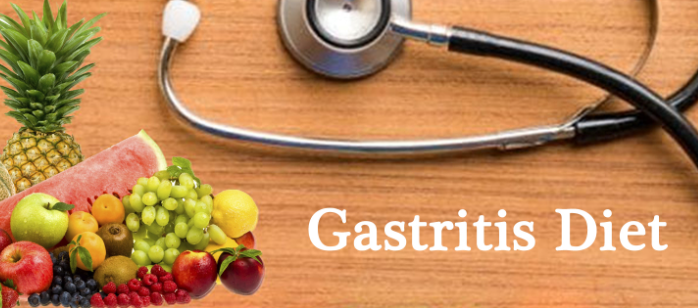BOURSESSENEGAL – Gastritis, an inflammation of the stomach lining, can cause discomfort and disrupt daily life. For those suffering from this condition, a well-planned gastritis diet can play a crucial role in managing symptoms and promoting healing. In this blog post, we will explore the essential components of a gastritis diet, discuss foods to include and avoid, and offer practical tips for creating meal plans that support digestive health.
What is Gastritis?
Gastritis occurs when the stomach lining becomes inflamed. This inflammation can stem from various factors, including excessive alcohol consumption, chronic stress, bacterial infections (especially Helicobacter pylori), and certain medications. Symptoms often include abdominal pain, bloating, nausea, and indigestion.
The Importance of a Gastritis Diet
Adopting a gastritis diet is vital for alleviating symptoms and preventing flare-ups. The right foods can help soothe inflammation, promote healing, and restore balance to the digestive system. Conversely, certain foods can exacerbate symptoms and lead to discomfort. Understanding the impact of diet on gastritis empowers individuals to take control of their health.
Key Principles of a Gastritis Diet
When creating a gastritis diet plan, focus on these key principles:
- Avoid Irritants: Identify and eliminate foods that trigger symptoms.
- Opt for Anti-inflammatory Foods: Incorporate foods that reduce inflammation and support healing.
- Practice Moderation: Pay attention to portion sizes to prevent overloading the stomach.
- Stay Hydrated: Drink plenty of water to support digestion and overall health.
Foods to Include in Your Gastritis Diet
H2: Anti-inflammatory Foods
Focusing on anti-inflammatory foods can significantly benefit those with gastritis. Consider including:
H3: Fruits and Vegetables
Fresh fruits and vegetables provide essential vitamins, minerals, and antioxidants. Aim for:
- Bananas: Gentle on the stomach and provide essential nutrients.
- Apples: High in fiber and pectin, aiding digestion.
- Leafy Greens: Spinach and kale contain anti-inflammatory properties.
H3: Whole Grains
Whole grains are rich in fiber, promoting healthy digestion. Good options include:
- Brown Rice: A gentle carbohydrate that is easy to digest.
- Oats: Help maintain a healthy gut environment.
H3: Lean Proteins
Incorporating lean proteins can help repair tissues and maintain muscle mass. Consider:
- Chicken: Skinless and grilled or baked.
- Fish: Salmon and mackerel provide omega-3 fatty acids, which reduce inflammation.
H2: Healthy Fats
Not all fats are created equal. Healthy fats support overall health and can help reduce inflammation. Include:
H3: Avocado
Avocado is packed with healthy fats and nutrients that support digestion.
H3: Olive Oil
Using olive oil in cooking can add flavor while promoting heart health.
Foods to Avoid in Your Gastritis Diet
H2: Irritating Foods
Certain foods can aggravate gastritis symptoms. Be mindful of these irritants:
H3: Spicy Foods
Spicy foods can trigger inflammation and worsen symptoms. Opt for milder alternatives.
H3: Acidic Foods
Citrus fruits, tomatoes, and vinegar may irritate the stomach lining. Limit these in your diet.
H3: Processed Foods
Processed snacks and meals often contain additives and preservatives that can lead to digestive upset. Choose whole, unprocessed foods whenever possible.
H2: Caffeine and Alcohol
Both caffeine and alcohol can irritate the stomach lining. Reducing or eliminating these substances can promote healing and reduce symptoms.
Practical Tips for Following a Gastritis Diet
H2: Meal Planning
Meal planning can make it easier to adhere to a gastritis diet. Consider the following tips:
H3: Create a Weekly Menu
Plan meals for the week ahead. This strategy helps you avoid impulsive food choices that may aggravate symptoms.
H3: Keep a Food Diary
Tracking your food intake can help identify potential triggers. Note any symptoms after eating specific foods.
H2: Cooking Methods
How you prepare your food can also impact your symptoms. Choose gentle cooking methods, such as:
H3: Steaming
Steaming vegetables preserves nutrients and makes them easier to digest.
H3: Baking or Grilling
These methods require less oil and avoid the heavy fats often used in frying.
Hydration and Digestive Health
Staying hydrated is essential for digestive health. Water aids digestion and helps prevent constipation, which can exacerbate gastritis symptoms. Aim to drink at least eight glasses of water daily. Herbal teas, like ginger or chamomile, can also provide soothing benefits.
H2: Probiotics and Gut Health
Incorporating probiotics into your gastritis diet can promote gut health. Foods rich in probiotics include:
- Yogurt: Look for plain, low-fat options without added sugars.
- Kefir: A fermented drink that supports healthy digestion.
H2: Consult with a Healthcare Professional
Before making significant changes to your diet, consult a healthcare professional or a registered dietitian. They can provide personalized guidance and help you design a gastritis diet that meets your specific needs.
Conclusion
Navigating a gastritis diet requires awareness and dedication, but the benefits can be significant. By focusing on anti-inflammatory foods, avoiding irritants, and practicing mindful eating, you can manage symptoms effectively and promote healing. Remember, everyone’s experience with gastritis is unique, so listen to your body and adjust your diet accordingly. With patience and perseverance, you can create a gastritis-friendly lifestyle that enhances your overall well-being.
REFERENCE : https://www.health.com/



